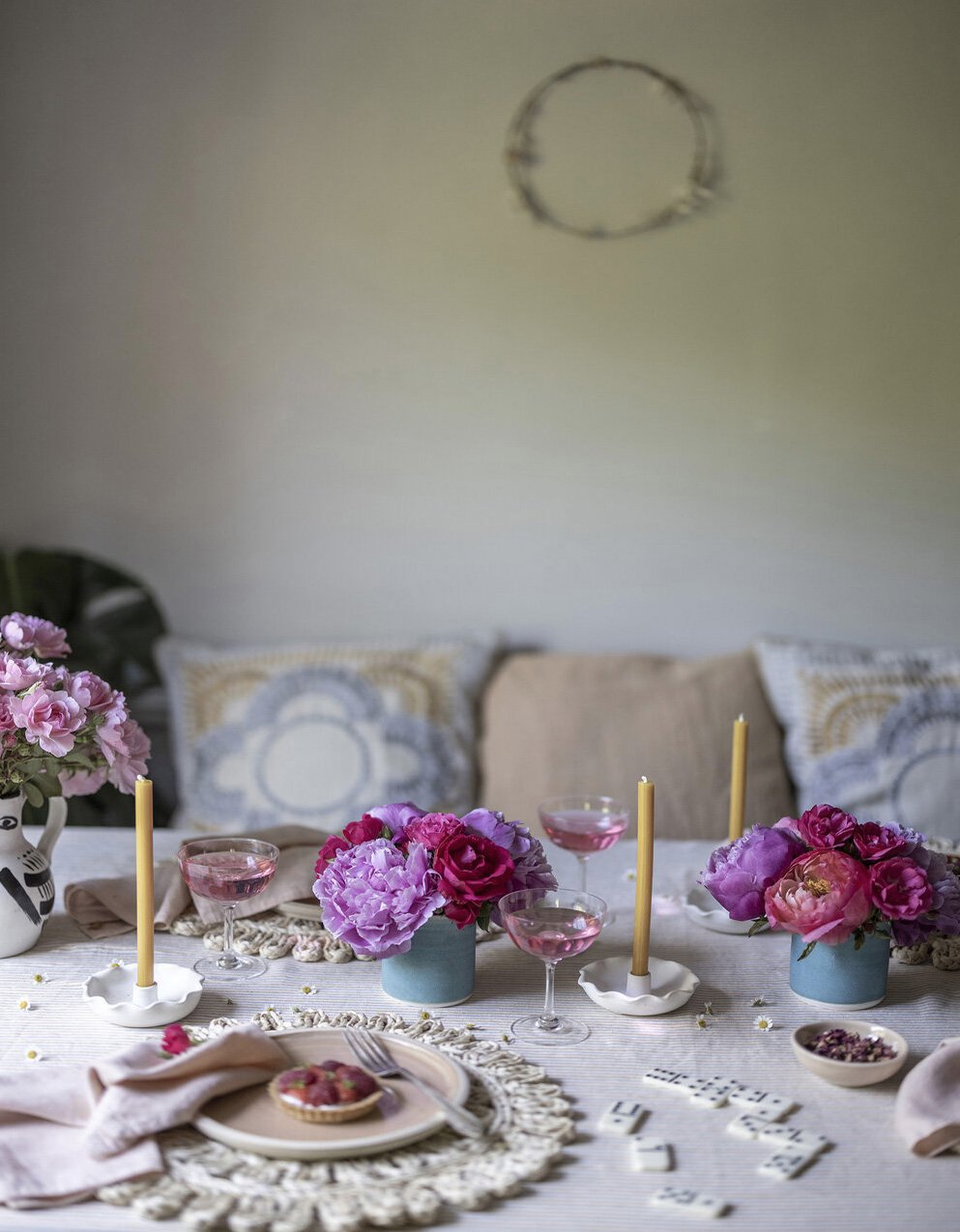Tips for Choosing the Best Vase for Your Flowers
One of the greatest joys of summer for me is the abundance of flowers to play around and experiment with. I rarely buy flowers - they feel like an expensive indulgence - and the guilt gets to me. But in summertime my garden (and the fields and hedgerows) come alive with colour - and there’s always plenty to bring indoors to liven up the kitchen or bedside table.
One of the questions I’m often asked when people are looking to buy one of our vases is “what kind flowers would look good in this?” So I though I’d put together some tips and ideas for the kind of thing I reach for when I’m looking for the perfect vessel for my blooms - be that armfuls of wild cow parsley, a fistful of buttercups my daughter’s presented me with, or something more formal from my garden like heavenly roses and dahlias.
I don’t consider myself an expert on arranging flowers, far from it. But I do love a good old faff with a mound of blousy blooms and some greenery, especially when there’s no time pressure. Mostly I enjoy playing with flowers because I just love to take time to observe them - they really do bring me such intense joy. Contact with nature is known to improve mental health and I find that even a few minutes of faffery brings me into a calm, almost serene state of being.
Over the years I’ve worked out what I can do with what I have available at my fingertips and, as ever, my mantra is keep it simple. What I’d like to share here are my tips for making arrangements that are simple, slightly asymmetrical, sometimes a little bit wild and, most importantly, joy-inducing!
So, here are some of my simple tips and ideas to achieve something you’ll love to look at in your home:
Choose your vase to go with the flowers you have, not the other way round.
The single most important thing to keep in mind is to get your proportions right.
Your vessel is there to hold your flowers and greenery and show them off to their full potential - as a loose rule of thumb, try to achieve roughly two thirds flowers and foliage to one third vase - I find half and half can work well, too. You can go with more, but never allow your vase to overpower your flowers
This is equally as important if you’re using a single stem - resist the temptation to cut it short, allow it to gracefully emerge from your vase - and keep some foliage on the stem if you can, for a more natural look.
When choosing your flowers, stick to a colour palette and choose your vase to compliment those colours - sometimes I like to keep the vase in a neutral tone, but sometimes I like a pop of colour. I love to mix our turquoise glazed vases and pots with pale, peachy (and even bright) pinks. It’s such an uplifting combo. And ignore all those old rules you’ve picked up over the years about not using clashing colours “red and green should never be seen” is one of the most ridiculous things I’ve every heard.
Never let supposed rules stop you from experimenting. After all, it’s your arrangement, and if you like it, who cares what anyone else thinks!
On the whole, I tend to pick out a narrow-necked vase if I’m looking to display lofty stems like cow parsley, delphiniums, verbena, grasses and anything wild and slightly twiggy-looking. Our Fremington cylinders, and Sophia, Meadow and Madge vases are good examples. Our Orchard ceramic flower frog works well here, too. I like to keep my ceramic flower frog arrangements fairly sparse and wild - so the flowers or grasses look as they do when they grow naturally in the wild.
If I’m looking for a home for my roses, peonies or dahlias, I reach for a wider-necked vase like our Heath and Furze vases, our Braunton tumblers, which look lovely in groups with little posies of full flowers - or even a bowl with a metal flower pin in the base. Keep the flower slightly asymmetrical to avoid them looking too “done.” Sometimes I like to add some longer, wispy bits, like miscanthus, giant quaking grass or even some clematis vine for a more casual, slightly wild look
Our miniatures and bud vases are perhaps the simplest of all to fill with one or two full-headed blooms like roses and dahlias - cosmos and geraniums also work well. Or choose something lacy and slightly wild-looking, like astrantia or wild carrot.




















